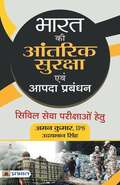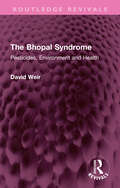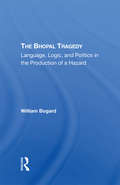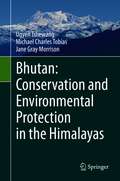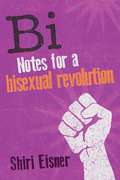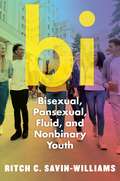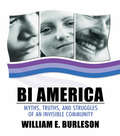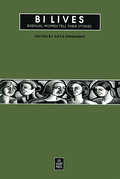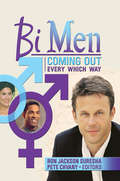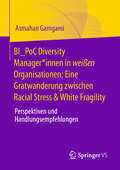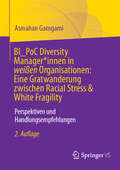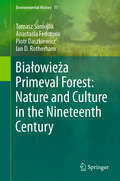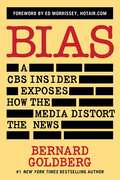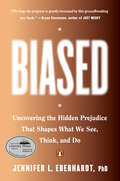- Table View
- List View
Bharat Aur Samkalin Vishwa Bhag-2 class 10 - Himachal Pradesh Board: भारत और समकालीन विश्व भाग-२ कक्षा १० - हिमाचल प्रदेश बोर्ड
by Himachal Pradesh Board of School Education - Dharamshalaहिमाचल प्रदेश स्कूल शिक्षा बोर्ड, धर्मशाला द्वारा प्रकाशित कक्षा 10 के लिए "सामाजिक विज्ञान भारत और समकालीन विश्व-2" का डिजिटल संस्करण, 2013 से 2022 तक की विभिन्न संस्करणों और पुनर्मुद्रितियों को शामिल करता है। इसका सारांश पाठ्यक्रम और शिक्षण प्रक्रिया के माध्यम से शिक्षकों और छात्रों के बीच एक सेतु के रूप में काम करता है। यह मूल्यांकन, संबोधन, और अच्छी तरह से प्रस्तुत सामग्री की महत्वता पर जोर देता है। इस पुस्तक के पहले दो अध्यायों (खंड 1) में इसी इतिहास को समझने की कोशिश की गई है। यहाँ किस तरह यूरोप में राष्ट्रवाद का विचार उपजा, किस तरह भूभागों को एकजुट किया गया और राष्ट्रीय सरकारें बनाई गईं। यह दशकों तक चलने वाली प्रक्रिया थी जिसमें बहुत सारे युद्ध और क्रांतियाँ हुई, बहुत सारे वैचारिक संघर्ष और राजनीतिक टकराव हुए। यूरोप की चर्चा (अध्याय 1) से हम अपना ध्यान भारत (अध्याय 2) में राष्ट्रवाद के विकास पर केंद्रित करेंगे, जहाँ राष्ट्रवाद का स्वरूप उपनिवेशवाद तथा साम्राज्यवाद विरोधी आंदोलनों से तय हुआ था। खंड 2 में हम अर्थव्यवस्थाओं और आजीविकाओं पर विचार करेंगे। पिछले साल आपने चरवाहों और वनवासियों के बारे में पढ़ा था, जिन्हें बीते ज़माने के अवशेषों की तरह देखा जाता है जबकि वास्तव में वे इसी आधुनिक दुनिया का हिस्सा हैं जिसमें हम रहते हैं। इस साल हम उन घटनाओं पर विचार करेंगे जिन्हें आधुनिकता का प्रतीक माना जाता है- वैश्वीकरण और औद्योगीकरण। इस भाग में हम इन बदलावों के इतिहास के विविध आयामों की पड़ताल करेंगे। अध्याय 4 में आप देखेंगे कि किस तरह भूमंडलीकृत विश्व एक लंबे और जटिल इतिहास से उपजा है। प्राचीन काल से ही तीर्थयात्री, व्यापारी, मुसाफिर अपने साथ सामानों, जानकारियों और दक्षताओं को लिए दूर-दूर तक जाते रहे हैं। खंड 3 में आप मुद्रण संस्कृति के इतिहास को पढ़ेंगे। छपी हुई चीजों से घिरे हुए हम लोगों को यह कल्पना करना भी मुश्किल दिखाई पड़ सकता है कि एक जमाने में प्रिंटिंग जैसी चीज होती ही नहीं थी। अध्याय 5 में इस बात पर विचार किया गया है कि किस तरह समकालीन दुनिया का इतिहास छपाई तकनीक के विकास के साथ अभिन्न रूप से जुड़ा रहा है। वहाँ आप देखेंगे कि छपाई ने सूचनाओं और विचारों, बहसों और चर्चाओं, विज्ञापन और प्रचार तथा नाना प्रकार के नए साहित्य के प्रसार को किस तरह संभव बनाया है।
Bharat Aur Samkalin Vishwa Bhag-2 class 10 - JCERT: भारत और समकालीन विश्व भाग-२ १०वीं कक्षा - जेसीईआरटी
by Jharkhand Shaikshik Anusandhan Evam Prashikshan Parishad Ranchi"भारत और समकालीन विश्व - 2" (कक्षा 10) झारखंड शैक्षिक अनुसंधान एवं प्रशिक्षण परिषद् द्वारा प्रकाशित है और इसमें आधुनिक इतिहास के महत्वपूर्ण पहलुओं को शामिल किया गया है। इसमें राष्ट्रवाद के उदय, उपनिवेशवाद, और वैश्विक स्तर पर सामाजिक-आर्थिक परिवर्तनों पर विस्तार से चर्चा की गई है। पुस्तक के पहले खंड में यूरोप में राष्ट्रवाद के उदय को समझाया गया है, जहाँ 19वीं सदी के दौरान राष्ट्र-राज्यों की अवधारणा विकसित हुई। फ्रांसीसी क्रांति के बाद, यूरोप में राजनीतिक और सामाजिक विचारों में बड़ा बदलाव आया, जिसने राष्ट्रवाद को एक प्रमुख ताकत बना दिया। यूरोप में सत्ता संघर्ष, क्रांतियाँ और स्वतंत्रता की आकांक्षाएँ नए राष्ट्रों के निर्माण की प्रक्रिया को तेज करती रहीं। पुस्तक का दूसरा खंड जीविका, अर्थव्यवस्था और समाज पर केंद्रित है। इसमें वैश्वीकरण और औद्योगीकरण के इतिहास को विस्तार से बताया गया है, जहाँ वैश्विक व्यापारिक नेटवर्क, संसाधनों का शोषण और उपनिवेशों में श्रमिकों के संघर्ष पर चर्चा की गई है। तीसरे खंड में मुद्रण संस्कृति के विकास का उल्लेख है, जिसने विचारों के प्रसार, समाज में जागरूकता और राजनीतिक आंदोलनों को गति दी। मुद्रण तकनीक ने न केवल साहित्य और पत्रकारिता को बढ़ावा दिया, बल्कि राजनीतिक चेतना और राष्ट्रवादी विचारधारा को जन-जन तक पहुँचाने में महत्वपूर्ण भूमिका निभाई। कुल मिलाकर, यह पुस्तक छात्रों को आधुनिक इतिहास के महत्वपूर्ण घटनाओं और प्रक्रियाओं को समझने में मदद करती है और दुनिया के विभिन्न हिस्सों में सामाजिक और राजनीतिक परिवर्तनों का व्यापक दृष्टिकोण प्रदान करती है।
Bharat Ki Aantarik Suraksha Evam Aapda Prabandhan: भारत की आंतरिक सुरक्षा एवं आपदा प्रबंधन
by Aman Kumar Ips Udaybhan Singhप्रस्तुत पुस्तक ‘भारत की आंतरिक सुरक्षा एवं आपदा प्रबंधन’ संघ लोक सेवा आयोग की मुख्य परीक्षा हेतु लिखी गई है। यह पुस्तक भारत की आंतरिक सुरक्षा एवं आपदा प्रबंधन से संबद्ध समस्त अवधारणाओं का निष्पक्षत व सरल भाषा में विवरण प्रस्तुत करती है। इसमें संगाठित अपराध, आतंकवाद, नक्सलवाद, साइबर अपराध, कालाधन, मनी लांड्रिंग, हवाला कारोबार, कश्मीर समस्या, सांप्रदायिकता इत्यादि ज्वलंत विषयों पर विश्लेषणात्मक सामग्री प्रस्तुत की गई है। प्रमुख विशेषताएँ भारत की आंतरिक सुरक्षा के विभिन्न पक्षों पर सटीक व विश्लेषणात्मक सामग्री आपदा प्रबंधन पर एक समग्र अवलोकन। मानचित्रों के द्वारा तथ्यों का सरल प्रस्तुतीकरण।
Bharat Ki Rajvyavastha
by M. LakshmikantOne of the most useful books for the students of various streams preparing for civil services exams in India. This is one such book on Indian polity which has been highly rated by aspirants and top ranked institutions of India. Right from historical background to the current times, this book covers all. Practice questions at the end will be of great help to the students.
Bharat mein Lok Prashasan
by B. L. FadiaThis is an iconic book written on the subject of public administration in India. By nature India is a social welfare state and in the development processes we are growing in multiple direction. This book covers many of those areas topics like IAS, planning commission, NDC, Finance commission Panchayati Raj etc.
Bhartiya Arthavyavstha Paper-1 ani Paper-2 First Semester FYBA New NEP Syllabus - SPPU: भारतीय अर्थव्यवस्था पेपर-१ आणि पेपर-२ प्रथम सत्र एफ.वाय.बी.ए. नवीन एन.इ.पी. अभ्यासक्रम - सावित्रीबाई फुले पुणे यूनिवर्सिटी
by Dr Sunil Ugale Dr Amol Gaikwad Dr Manisha Aher"भारतीय अर्थव्यवस्था: पेपर-१ आणि पेपर-२" पुस्तक हे सावित्रीबाई फुले पुणे विद्यापीठाच्या (SPPU) नवीन राष्ट्रीय शैक्षणिक धोरण (NEP) 2020 अंतर्गत तयार करण्यात आलेले पुस्तक आहे. हे पुस्तक भारतीय अर्थव्यवस्थेच्या प्रमुख मुद्द्यांवर सखोल प्रकाश टाकते, जसे की अर्थव्यवस्थेचा अर्थ, विकसित व विकसनशील अर्थव्यवस्थांचे वैशिष्ट्य, तसेच भारतीय अर्थव्यवस्थेचा विकसनशील देश म्हणून अभ्यास. यामध्ये कृषी, उद्योग आणि सेवा क्षेत्रातील योगदान, लोकसंख्या व मानव संसाधनाचे महत्त्व, आणि पायाभूत सुविधांचा विकास यांचे सविस्तर वर्णन आहे. विद्यार्थ्यांना अर्थशास्त्राचे मूलभूत संकल्पना समजून घेण्यास मदत करणारे हे पुस्तक, अल्प व दीर्घकालीन आर्थिक धोरणांचे विवेचन करते. यामध्ये भारताच्या आर्थिक विकासातील अडथळे, संधी आणि भविष्यातील मार्ग यावरही सखोल विचार करण्यात आला आहे. स्पर्धा परीक्षांसाठी उपयुक्त आणि अभ्यासासाठी मार्गदर्शक ठरणारे हे पुस्तक विद्यार्थ्यांसाठी महत्त्वपूर्ण साधन आहे.
The Bhopal Syndrome: Pesticides, Environment and Health (Routledge Revivals)
by David WeirFirst published in 1988, The Bhopal Syndrome documents one of world’s worst industrial disaster: The Bhopal gas tragedy of 1984. The tragedy exposed a variety of issues plaguing rapid development such as the negligence of corporations and government, prioritizing of commercial benefits over human lives, inadequate post-disaster rehabilitation and compensation, and frightening levels of environmental pollution. The author argues that the Bhopal gas tragedy is being replicated across the globe at various intensities facilitating a dangerous normalisation. He asserts that workers and consumers should fight for their ‘right to know’ about working conditions, chemicals used in pesticides, the harm caused by producing such chemicals, how these chemicals end up on our food as well as the manner in which the chemicals interact in our body. Climate crisis and undeterred industrial development still haunt our reality making this book an essential read for any concerned citizen and for students of disaster management, industrial disasters, climate change, environment, toxicology and workers’ rights.
The Bhopal Tragedy: Language, Logic, And Politics In The Production Of A Hazard
by William BogardThis book offers a critical theory of hazards, which the Bhopal tragedy would serve to highlight. It provides a general model of how hazards existed in Bhopal come to be defined and symbolically manipulated—through the institutionalized use of expert knowledge and political persuasion.
Bhugol class 10 - Maharashtra Board: भूगोल १०वीं कक्षा - महाराष्ट्र बोर्ड
by Maharashtra Rajya Pathyapustak Nirmiti Va Abhysakram Sanshodhan Mandal Puneयह पुस्तक दसवीं कक्षा के छात्रों को भूगोल की गहन समझ प्रदान करती है, जिसमें प्राकृतिक एवं मानवीय भूगोल के महत्वपूर्ण विषयों को शामिल किया गया है। इसमें पृथ्वी की संरचना, जलवायु परिवर्तन, प्राकृतिक आपदाएँ, जनसंख्या वितरण, संसाधनों का सतत उपयोग, उद्योग, परिवहन और संचार जैसे विषयों को विस्तार से समझाया गया है। पुस्तक में भारत और ब्राजील की भौगोलिक विशेषताओं की तुलना भी की गई है, जिससे छात्रों को विभिन्न भौगोलिक अवधारणाओं का तुलनात्मक अध्ययन करने का अवसर मिलता है। इसमें भारतीय संविधान के अनुच्छेद 51(A) के अंतर्गत नागरिकों के कर्तव्यों पर भी प्रकाश डाला गया है, जिसमें पर्यावरण संरक्षण, वैज्ञानिक दृष्टिकोण अपनाने, और राष्ट्रीय एकता बनाए रखने जैसी जिम्मेदारियाँ शामिल हैं। इसके अलावा, पुस्तक में मानचित्र अध्ययन, सांख्यिकीय डेटा विश्लेषण, क्षेत्र-अध्ययन, और व्यावहारिक परियोजनाओं पर भी ध्यान दिया गया है। यह पाठ्यपुस्तक न केवल छात्रों को परीक्षा की तैयारी में मदद करती है, बल्कि उन्हें भूगोल के व्यावहारिक उपयोग और सतत विकास की दिशा में सोचने के लिए प्रेरित करती है।
Bhugol class 6 - Maharashtra Board: भूगोल ६वीं कक्षा - महाराष्ट्र बोर्ड
by Maharashtra Rajya Pathyapustak Nirmiti Va Abhysakram Sanshodhan Mandal Puneयह पुस्तक छठी कक्षा के छात्रों के लिए भूगोल विषय का मूलभूत परिचय प्रदान करती है। इसमें पृथ्वी की संरचना, उसके विभिन्न पहलू, अक्षांश-देशांतर रेखाएँ, जलवायु, महासागर, चट्टानें, प्राकृतिक संसाधन, ऊर्जा स्रोत और मानवीय व्यवसायों का अध्ययन किया गया है। पुस्तक छात्रों को पृथ्वी के भौगोलिक स्वरूप, उसके मानचित्र, मौसम परिवर्तन, तापमान वितरण, महासागरों के महत्त्व और उनके प्रदूषण से संबंधित जानकारी प्रदान करती है। इसके अलावा, यह संसाधनों के विवेकपूर्ण उपयोग और सतत विकास पर जोर देती है। विद्यार्थियों को क्षेत्रीय अध्ययन, मानचित्र पढ़ने की तकनीक, स्थानों की पहचान और पर्यावरण संरक्षण के प्रति जागरूक किया जाता है। इसमें वैज्ञानिक दृष्टिकोण, सामाजिक समरसता, और प्राकृतिक संसाधनों के संरक्षण पर बल दिया गया है। भूगोल को सरल और रोचक बनाने के लिए पुस्तक में चित्र, मानचित्र और गतिविधियाँ शामिल की गई हैं, जिससे छात्र व्यावहारिक ज्ञान अर्जित कर सकें और इसे दैनिक जीवन में लागू कर सकें।
Bhugol class 7 - Maharashtra Board: भूगोल ७वीं कक्षा - महाराष्ट्र बोर्ड
by Maharashtra Rajya Pathyapustak Nirmiti Va Abhysakram Sanshodhan Mandal Puneयह पुस्तक सातवीं कक्षा के विद्यार्थियों के लिए भूगोल विषय की मूलभूत और महत्वपूर्ण अवधारणाओं को सरल और रोचक तरीके से प्रस्तुत करती है। इसमें पृथ्वी की भौगोलिक संरचना, जलवायु परिवर्तन, ऋतुचक्र, सूर्य, चंद्रमा और पृथ्वी के पारस्परिक संबंध, ज्वार-भाटा, वायुदाब, हवाओं की दिशा, प्राकृतिक प्रदेश, मिट्टी, कृषि और मानवीय बस्तियों से संबंधित विषयों को शामिल किया गया है। पुस्तक में भारत के संविधान के अनुच्छेद 51(A) के तहत नागरिकों के मूलभूत कर्तव्यों पर भी प्रकाश डाला गया है, जिसमें पर्यावरण संरक्षण, वैज्ञानिक दृष्टिकोण अपनाने और राष्ट्रीय एकता बनाए रखने की बात कही गई है। मानचित्र, चित्र, तालिकाएँ और गतिविधियों के माध्यम से विद्यार्थियों को अवधारणाएँ समझने में सहायता मिलती है। इसके अलावा, छात्रों को पर्यावरण संरक्षण, संसाधनों के विवेकपूर्ण उपयोग और सतत विकास की ओर प्रेरित करने के लिए व्यावहारिक उदाहरण दिए गए हैं। यह पुस्तक भूगोल के प्रति जिज्ञासा बढ़ाने और छात्रों को विषय का व्यावहारिक ज्ञान प्रदान करने में सहायक सिद्ध होती है।
Bhugol class 8 - Maharashtra Board: भूगोल ८वीं कक्षा - महाराष्ट्र बोर्ड
by Maharashtra Rajya Pathyapustak Nirmiti Va Abhysakram Sanshodhan Mandal Puneयह पुस्तक विद्यार्थियों को भूगोल की गहन समझ प्रदान करती है, जिसमें पृथ्वी की आंतरिक संरचना, स्थानीय एवं मानक समय, महासागरों की धाराएँ, जलवायु परिवर्तन, भूमि उपयोग, जनसंख्या वितरण और औद्योगिक विकास जैसे विषय शामिल हैं। इसमें भारत के मानक समय (IST), विभिन्न प्राकृतिक संसाधनों के उपयोग और पर्यावरणीय संतुलन पर विशेष ध्यान दिया गया है। इसके अलावा, भारत के संविधान के अनुच्छेद 51(A) के तहत नागरिकों के मौलिक कर्तव्यों, जैसे पर्यावरण संरक्षण, वैज्ञानिक दृष्टिकोण अपनाने और राष्ट्र की एकता बनाए रखने पर भी प्रकाश डाला गया है। पुस्तक में मानचित्र, चित्र, गतिविधियाँ और अध्ययन-अध्यापन के डिजिटल संसाधनों को भी जोड़ा गया है। यह छात्रों को भूगोल विषय की व्यावहारिक समझ विकसित करने में मदद करती है और उन्हें सतत विकास की दिशा में सोचने के लिए प्रेरित करती है।
Bhutan: Conservation and Environmental Protection in the Himalayas
by Ugyen Tshewang Michael Charles Tobias Jane Gray MorrisonLocated in the heart of the Eastern Himalayas, Bhutan practices the philosophy of Gross National Happiness (“GNH”) that embraces environmental conservation as one of the main building blocks for its sustainable development goals. Bhutan’s conservation strategies and success are largely driven by the strong political will and visionary leadership of His Majesty the King of Bhutan The nation’s Buddhist perspectives regarding a deep and abiding respect for nature; and the strategic enforcement of a wide-ranging stringent set of internal regulations and controls have helped ensure ecological gold standards in Bhutan. Moreover, the country is an active member of the international conservation community by fulfilling its implementation of various Multilateral Environment Agreements. While it emerged into the 21st century as one of the 36 global terrestrial “hotspots” in biological diversity conservation ranks, Bhutan’s sheer commitment with more than 51% of its territory being managed under the explicit status of a protected area network, and more than 70% of the land under forest cover, represents Bhutan’s exemplary dedication to protect the planet despite its smallness in size and economy, and the biological fragility exemplified by its hotspot situation. In the face of imminent severe threats of global warming, Bhutan nonetheless exemplifies the truth that “a small country with a big conservation commitment” can make an enormous contribution to the global community.At the regional level, Bhutan is intent upon protecting the Water Towers of Asia (that glacial expanse of the Himalayas) which is a critical resource bulwark for about one-fifth of the global population downstream in South Asia. Such protections invariably help mitigate climate change by acting as a nation-wide carbon sink through its carbon neutral policies. In short, Bhutan has long represented one of the world’s foremost national guardians of biodiversity conservation, ecological good governance, and societal sustainability at a period when the world has entered the Anthropocene – an epoch of mass extinctions.We envision this publication to be ecologically and ethically provocative and revealing for the concerned scientific communities, and governments. Through an extensive review of the scientific and anthropological literature, as well as the research team's own data, the Author's have set forth timely recommendations for conservation policies, strategies and actions. This book provides technical and deeply considered assessments of the state of Bhutan’s environment, its multiple, human-induced stressors and pressures; as well as extremely sound, practical techniques that would address conservation strategies in the Himalayas and, by implication, worldwide.
Bi: Notes for a Bisexual Revolution
by Shiri EisnerDepicted as duplicitous, traitorous, and promiscuous, bisexuality has long been suspected, marginalized, and rejected by both straight and gay communities alike. 'Bi' takes a long overdue, comprehensive look at bisexual politics-from the issues surrounding biphobia/monosexism, feminism, and transgenderism to the practice of labeling those who identify as bi as either #147;too bisexual" (promiscuous and incapable of fidelity) or #147;not bisexual enough" (not actively engaging romantically or sexually with people of at least two different genders). In this forward-thinking and eye-opening book, feminist bisexual and genderqueer activist Shiri Eisner takes readers on a journey through the many aspects of the meanings and politics of bisexuality, specifically highlighting how bisexuality can open up new and exciting ways of challenging social convention. Informed by feminist, transgender, and queer theory, as well as politics and activism, 'Bi' is a radical manifesto for a group that has been too frequently silenced, erased, and denied-and a starting point from which to launch a bisexual revolution.
Bi: Bisexual, Pansexual, Fluid, and Nonbinary Youth
by Ritch C. Savin-WilliamsWhat bisexual youth can tell us about today’s gender and sexual identities Despite the increasing visibility of LGBTQ people in American culture, our understanding of bisexuality remains superficial, at best. Yet, five times as many people identify as bisexual than as gay or lesbian, and as much as 25 percent of the population is estimated to be bisexual. In Bi, noted scholar of youth sexuality, Ritch Savin-Williams, brings bisexuality to centerstage at a moment when Gen Z and millennial youth and young adults are increasingly rejecting traditional labels altogether. Drawing on interviews with bisexual youth from a range of racial, ethnic, and social class groups, he reveals to us how bisexuals define their own sexual orientation and experiences—in their own words. Savin-Williams shows how and why people might identify as bisexual as a result of their biology or upbringing; as a bridge or transition to something else; as a consequence of their curiosity; or for a range of other equally valid reasons.With an understanding that sexuality and romantic attachments are often influx, Savin-Williams offers us a way to think about bisexuality as part of a continuum. He shows that many of the young people who identify as bisexual often defy traditional views, dispute false notions, and reimagine sexuality with regard to both practice and identity. Broadly speaking, he shows that many young people experience a complex, nuanced existence with multiple sexual and romantic attractions as well as gender expressions, which are seldom static but fluctuate over their lives.Savin-Williams provides an important new understanding of bisexuality as an orientation, behavior, and identity. Bi shows us that bisexuality is seen and embraced as a valid sexual identity more than ever before, giving us timely and much-needed insight into the complex, fascinating experiences of bisexual youth themselves.
Bi America: Myths, Truths, and Struggles of an Invisible Community
by William BurlesonGain an in-depth understanding of the unique struggles of the bisexual community! "To me the gay and straight worlds are exactly the same; equally limited, judgmental, and bourgeois . . . just mirror images of each other. I truly like and overlap with some of the gay world, but my roots refuse to take hold there and grow. Unfortunately, my well-established roots in the straight world are simultaneously shriveling and dying too, leaving me feeling extremely unstable." -"Cool," a bisexual woman involved in a support groupThere are at least five million bisexual people in America, generally invisible to straight society, the gay community, and even to each other. While the vast majority of these five million live within the straight or gay world, there are a few who have formed a community of their own. Bi America: Myths, Truths, and Struggles of an Invisible Community offers an inside look at the American bisexual community and gives an understanding of the special circumstances unique to being bisexual. The book takes the reader to bi community events from picnics, to conferences, to support groups, to performances in order to expose the everyday trials of the bisexual community.Bi America includes very personal stories that let the voice of everyday bisexuals be heard through interviews, the "Bisexual History Project," in which ten bisexual people tell their life stories, and the "Online Support Group," a group of about 75 people who meet in cyberspace to talk about their lives and challenges. The book also includes the findings of a 2002 survey of about 300 bisexual people conducted via the Internet, an appendix that offers a concise list of resources for further study and personal enrichment, and an unabridged transcript of the "Bisexual History Project."Get the answers to these questions in Bi America: What is bisexuality? Is there a bisexual community? What is the culture of the bisexual community? What are commonalities and differences between the experiences of bi men and bi women? What is the special relationship between the bisexual and the transgender community? How have bisexuals and the bi community been affected by HIV/AIDS? What is the future of bisexual activism, if any? and many more! Bi America is a fascinating resource that exposes the challenges, struggles, and triumphs of bisexuals in America. Bisexuals, especially those newly coming out, can use this book to help understand their identity, and family members and friends seeking some insight into the unique circumstances faced by their loved ones will also find it helpful. This book will interest those concerned with the sociology of deviance or with subcultures in general. It is also appropriate for undergraduate sociology and cultural anthropology, as well as feminist studies and LGBT studies classes. This book offers one of the few accessible, nonacademic looks at this unique and interesting community. Visit the book's Web site at http://www.bi101.org
Bi Lives: Bisexual Women Tell Their Stories
by Kata OrndorffA collection of 18 in-depth interviews with a wide range of bisexual women of different races, ages, and economic classes involved in a very wide variety of lifestyles.
Bi Men: Coming Out Every Which Way
by Ron Jackson Suresha Pete ChvanyA moving and pioneering celebration of the male bisexual self that addresses biphobia in our societyIn today&’s sexual world, both straight and gay and lesbian communities still often refuse to accept the reality of bisexuality. Bi Men: Coming Out Every Which Way confronts head-on the limiting views that bisexuality is a transitional phase of sexual evolution or a simple refusal to accept being either homosexual or straight. This pioneering collection of moving personal essays by bisexual men and those who love them explores what it means to be bisexual in today&’s monosexually oriented society.The millennial shift in sexual perspectives draws more and more men to come out as being attracted to both women and men. Bisexual and bi-curious men will find comfort and camaraderie in these stories about coming out, its impact on family and marriage, evolving perspectives on bisexuals within the LGBT community, and the building of acceptance and affirmation for bisexuality and polyamory. The nearly three dozen essays in Bi Men: Coming Out Every Which Way are told in the honest words of bisexuals, confirming the validity of their place in the world while illustrating that there are more bi men than anyone ever realized. These diverse and pioneering men&’s stories reveal a long-disguised and unconventional truth-that bisexuality is a valid lifestyle that does not threaten either sexual camp. Each contributor to this collection affirms the innate fluidity of self, sexuality, family, and community, and proclaims that sexuality is truly diverse in its predispositions and creativity.Bi Men: Coming Out Every Which Way separates its essays into four parts: coming out and personal realization of bisexual nature bisexuality&’s effects on family and marriage an examination of the shifting viewpoints of bisexuality within gay communities ways in which bisexuals can affirm and respect their own desires and celebrate their sexual selvesThese intimate stories address: biphobia monosexual prejudice the impact on marriage family issues coming out to self, spouse, and family political and community issues religious and spiritual concernsBi Men: Coming Out Every Which Way is a vibrant, reassuring call to bisexuals, the bi-curious, or anybody who knows and loves a bisexual/bi-curious man, to read and more completely understand the unique issues of being bisexual while providing the ultimate affirmation of bisexuality&’s existence.
BI_PoC Diversity Manager*innen in weißen Organisationen: Perspektiven und Handlungsempfehlungen
by Asmahan GamgamiDieses Buch ist eine wegweisende Analyse der deutschen Diversity-Management-Praxis. Die Autorin bietet einen tiefgründigen, analytischen und umfassenden Einblick in die Komplexität der Thematik. Die zentrale Rolle weißer Befindlichkeiten sowie das Wirken kolonialer Kontinuitäten auf BI_PoC Diversity Manager*innen werden in ihrer Komplexität systematisch herausgearbeitet. Gamgami betont unter anderem das intrinsisch-aktivistische Verständnis von BI_PoC Diversity-Manager*innen und analysiert sowohl den Mehrwert als auch das Dilemma dieses Antriebs. Diese Forschung bietet jedoch nicht nur Kritik, sondern gibt gleichzeitig Einblicke und Handlungsempfehlungen in erfolgreiche Ansätze für Diversity Management und definiert die Kompetenzen guter Diversity-Manager*innen. Die Autorin lädt dazu ein, die Herausforderungen und Potenziale des deutschen Diversity Managements, sowie ihrer Akteur*innen zu verstehen und kritisch zu reflektieren.
BI_PoC Diversity Manager*innen in weißen Organisationen: Perspektiven und Handlungsempfehlungen
by Asmahan GamgamiDieses Buch ist eine wegweisende und machtkritische Analyse der deutschen Diversity Management-Praxis. Die Autorin bietet einen tiefgründigen, analytischen und umfassenden Einblick in die Komplexität der Thematik. Die zentrale Rolle weißer Befindlichkeiten sowie das Wirken kolonialer Kontinuitäten auf BI_PoC Diversity Manager*innen werden systematisch herausgearbeitet. Gamgami betont unter anderem das intrinsisch-aktivistische Verständnis von BI_PoC Diversity-Manager*innen und analysiert sowohl den Mehrwert als auch das Dilemma dieses Antriebs. Diese Forschung bietet jedoch nicht nur Kritik, sondern benennt wesentliche Faktoren für erfolgreiches Diversity Management, liefert Handlungsempfehlungen für den (Selbst-)Schutz von BI_PoC Diversity Manager&‘*innen und definiert die Kompetenzen, die gute Diversity Manager*innen mitbringen müssen. Dabei berücksichtigt sie stets die Wirkung bestehender Machtverhältnisse. Die Autorin lädt dazu ein, die Herausforderungen und Potenziale des deutschen Diversity Managements, sowie ihrer Akteur*innen zu verstehen und kritisch zu reflektieren.
Bialik, the Hebrew Bible and the Literature of Nationalism (Routledge Jewish Studies Series)
by David AberbachThis book explores the life and poetry of Chaim Nachman Bialik (1873–1934) in the context of European national literature between the French Revolution and World War I, showing how he helped create a modern Hebrew national culture, spurring the revival of Hebrew as a spoken language. The author begins with Bialik’s background in the Tsarist Empire, contextualizing Jewish powerlessness in Eastern Europe in the late nineteenth century. As European anti-Semitism grew, Bialik emerged at the vanguard of a modern Hebrew national movement, building on ancient biblical and rabbinic tradition and speaking to Jewish concerns in neo-prophetic poems, love poems, poems for children, and folk poems. This book makes accessible a broad but representative selection of Bialik’s poetry in translation. Alongside this, a variety of national poets are considered from across Europe, including Solomos in Greece, Mickiewicz in Poland, Shevchenko in Ukraine, Njegoš in Serbia, Petőfi in Hungary, and Yeats in Ireland. Aberbach argues that Bialik as Jewish national poet cannot be understood except in the dual context of ancient Jewish nationalism and modern European nationalism, both political and cultural. Written in clear and accessible prose, this book will interest those studying modern European nationalism, Hebrew literature, Jewish history, and anti-Semitism.
Białowieża Primeval Forest: Nature and Culture in the Nineteenth Century (Environmental History #11)
by Tomasz Samojlik Ian D. Rotherham Anastasia Fedotova Piotr DaszkiewiczUnderstanding the current state and dynamics of any forest is extremely difficult - if not impossible - without recognizing its history. Białowieża Primeval Forest (BPF), located on the border between Poland and Belarus, is one of the best preserved European lowland forests and a subject of myriads of works focusing on countless aspects of its biology, ecology, management. BPF was protected for centuries (15th-18th century) as a game reserve of Polish kings and Lithuanian grand dukes. Being, at that time, a part of the Grand Duchy of Lithuania, BPF was subject to long-lasting traditional, multi-functional utilisation characteristic for this part of Europe, including haymaking on forest meadows, traditional bee-keeping and fishing in rivers flowing through forest. This traditional model of management came to an abrupt end due to political change in 1795, when Poland and Grand Duchy of Lithuania ceased to exist in effect of partitioning by neighbouring countries, and the territory of BPF was taken over by the Russian Empire. The new Russian administration, influenced by the German trends in forestry, attempted at introducing the new, science-based forestry model in the BPF throughout the 19th century. The entire 19th century in the history of BPF is a story of struggle between new trends and concepts brought and implemented by new rulers of the land, and the traditional perception of the forest and forest uses, culturally rooted in this area and originating from mediaeval (or older) practices.The book will show the historical background and the outcome of this struggle: the forest’s history in the long 19th century focusing on tracking all cultural imprints, both material (artificial landscapes, introduced alien species, human-induced processes) and immaterial (traditional knowledge of forest and use of forest resources, the political and cultural significance of the forest) that shaped the forest’s current state and picture. Our book will deliver a picture of a crucial moment in forest history, relevant not only to the Central Europe, but to the continent in general. Moment of transition between a royal hunting ground, traditional type of use widespread throughout Europe, to a modern, managed forest. Looking at main obstacles in the management shift, the essential difference in perceptions of the forest and goods it provides in both modes of management, and the implications of the management change for the state of BPF in the long 19th century could help in better understanding the changes that European forests underwent in general.
Bias: A CBS Insider Exposes How the Media Distort the News
by Bernard Goldberg Ed MorrisseyIn his nearly thirty years at CBS News, Emmy Award-winner Bernard Goldberg earned a reputation as one of the preeminent reporters in the television news business. When he looked at his own industry, however, he saw that the media far too often ignored their primary mission: objective, disinterested reporting. Again and again he saw that they slanted the news to the left.For years Goldberg appealed to reporters, producers, and network executives for more balanced reporting, but no one listened. The liberal bias continued.In this classic number one New York Times bestseller, Goldberg blew the whistle on the news business, showing exactly how the media slant their coverage while insisting they're just reporting the facts.
The Bias of Communication
by Alexander John Watson Harold A. InnisOne of the most influential books ever published in Canada, Harold A. Innis's The Bias of Communication has played a major part in reshaping our understanding of history, communication, and media theory. First published in 1951, this masterful collection of essays explores the relationship between a society's communication media and that community's ability to maintain control over its development. Innis considers political and economic forces in the context of social change and the role of communication in the creation of both ancient and modern empires. In an essay for this new edition, Innis biographer Alexander John Watson examines the reasons why Innis, at the height of his success as an economic historian, embarked on new research areas of communications and empire, as well as the ways in which Marshall McLuhan's interpretations of Innis changed and de-politicized Innis's work. As important today as it was when first published, The Bias of Communication is essential reading for historians and scholars of communication and media studies.
Biased: Uncovering the Hidden Prejudice That Shapes What We See, Think, and Do
by Jennifer L. Eberhardt"Groundbreaking."--Bryan Stevenson, New York Times bestselling author of Just MercyFrom one of the world's leading experts on unconscious racial bias, a personal examination of one of the central controversies and culturally powerful issues of our time, and its influence on contemporary race relations and criminal justice.You don't have to be racist to be biased. Unconscious bias can be at work without our realizing it, and even when we genuinely wish to treat all people equally, ingrained stereotypes can infect our visual perception, attention, memory, and behavior. This has an impact on education, employment, housing, and criminal justice. In Biased, with a perspective that is at once scientific, investigative, and informed by personal experience, Jennifer Eberhardt offers us insights into the dilemma and a path forward.Eberhardt works extensively as a consultant to law enforcement and as a psychologist at the forefront of this new field. Her research takes place in courtrooms and boardrooms, in prisons, on the street, and in classrooms and coffee shops. She shows us the subtle--and sometimes dramatic--daily repercussions of implicit bias in how teachers grade students, or managers deal with customers. It has an enormous impact on the conduct of criminal justice, from the rapid decisions police officers have to make to sentencing practices in court. Eberhardt's work and her book are both influenced by her own life, and the personal stories she shares emphasize the need for change. She has helped companies that include Airbnb and Nextdoor address bias in their business practices and has led anti-bias initiatives for police departments across the country. Here, she offers practical suggestions for reform and new practices that are useful for organizations as well as individuals. Unblinking about the tragic consequences of prejudice, Eberhardt addresses how racial bias is not the fault of nor restricted to a few "bad apples" but is present at all levels of society in media, education, and business. The good news is that we are not hopelessly doomed by our innate prejudices. In Biased, Eberhardt reminds us that racial bias is a human problem--one all people can play a role in solving.

